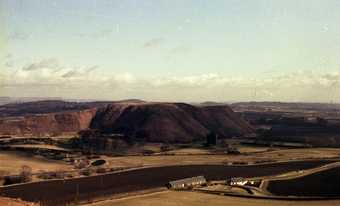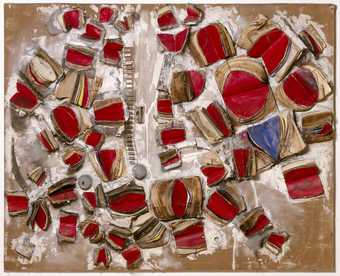When asked whether he had read a particular book, Dr Johnson is said to have replied: “Sir, I have looked into it.” Faced with a similar question in May 1967, John Latham might well have answered: “I have eaten it.” The book in question was Art and Culture by Clement Greenberg. Latham disagreed with the American critic’s emphasis on the formal content of art, and he objected to his dismissal of British art as being too tasteful. He therefore subjected Greenberg to a test of “taste” – metaphorically and literally.
In August 1966, Latham had assembled a group of students at his home where together they dismembered a library copy of Greenberg’s book. After removing the pages, they each tore the leaves into smaller fragments. They then “ate” the American’s prose – or, rather, chewed it over, the paper being masticated, pulverised with saliva into a pulp and spat out. The resulting mess was carefully collected and then, using various chemicals and yeast, left to ferment. When Latham received his overdue notice from the library at St Martin’s School of Art he responded by returning a phial containing the distilled “essence” of Greenberg. For this gesture, Latham was dismissed from his teaching post at St Martin’s. But in this instance, he had the last word. He went on to transform his record of the action, comprising letters, the overdue notice and the phial itself, into a work of art titled Still and Chew: Art and Culture 1966–1967 (now in the collection of the Museum of Modern Art, New York).
In its own way, Latham’s Art and Culture also contains his own essence – its vital ingredients being a radical, unconventional approach to making art; an insistent emphasis on art as a vehicle for meaning; and, finally, a subtle playfulness laced with an enduring capacity to shock. Almost 40 years later, there is something about destroying a book that continues to instil apprehension. Books symbolise learning, knowledge and culture, and they define systems of thought and belief. They are seen as the evidence of a civilised world. Their destruction would seem to strike at the very foundations of the intellectual structures that man has evolved.
Throughout his career, Latham has systematically used and abused books – cutting them up, pasting and gluing them, covering them with plaster and paint and burning them. In his most recent work they are presented adrift on a sea of shattered glass. This apparent nihilism has earned his art notoriety and, arguably, it has impeded a full appreciation of his significance. But Latham is far from being a mere torturer of the printed word.
He first turned to books as raw material for his work in 1958. Burial of Count Orgaz, made that year, uses various objects – a sponge, a whisky bottle, a fireguard and several unidentifiable volumes of prose. Together, they comprise a transcription of El Greco’s painting of the same title. Like El Greco, Latham’s theme is the passage from an earthly existence to a spiritual realm. The books bear a superficial formal resemblance to elements in the earlier painting, but they also symbolise thought. Spraying the entire conglomeration black is an effective device, for the objects no longer appear disparate. The physical world and the mental domain become conjoined.
From that point onwards, books are Latham’s main protagonists. The imposing reliefs that he made in the later 1950s combine the volumes that he found in secondhand shops with a range of subsidiary players such as light bulbs, bits of wire, wood, tubing and plaster. In these a congealed mass of material appears to emerge from a blank surface. The objects thrust forward - tactile and tangible, assertively real. Such works as Belief System 1959 and the remarkable Observer series 1959–1960 are also complex metaphors. They evoke a state of becoming. Within a symbolic structure, books imply the psychological, non-material state, the invisible force that animates the physical world. From the outset Latham has destroyed books, but they reemerge in the context of art, transformed by a spirit of affirmation in which all things are united.


